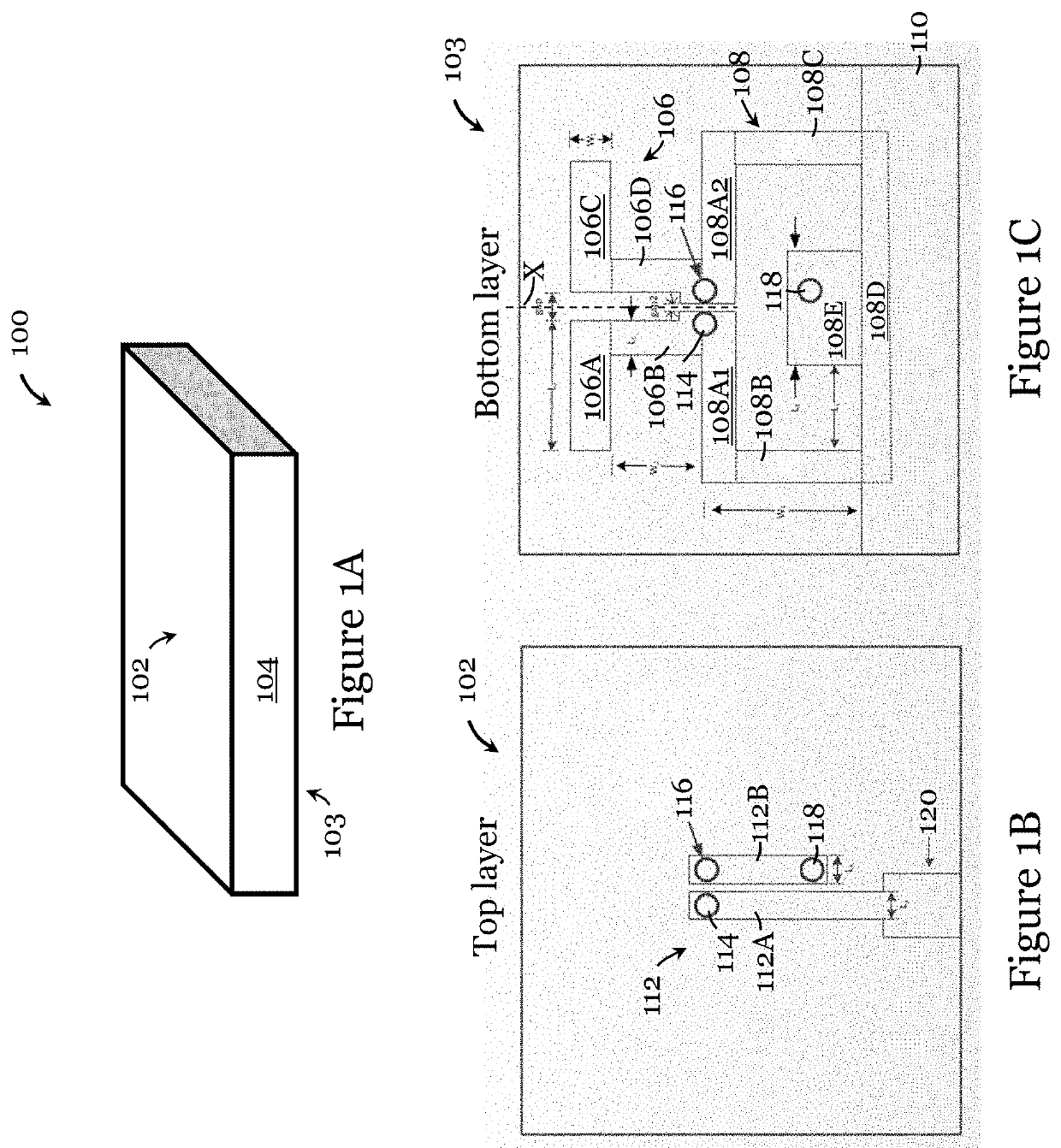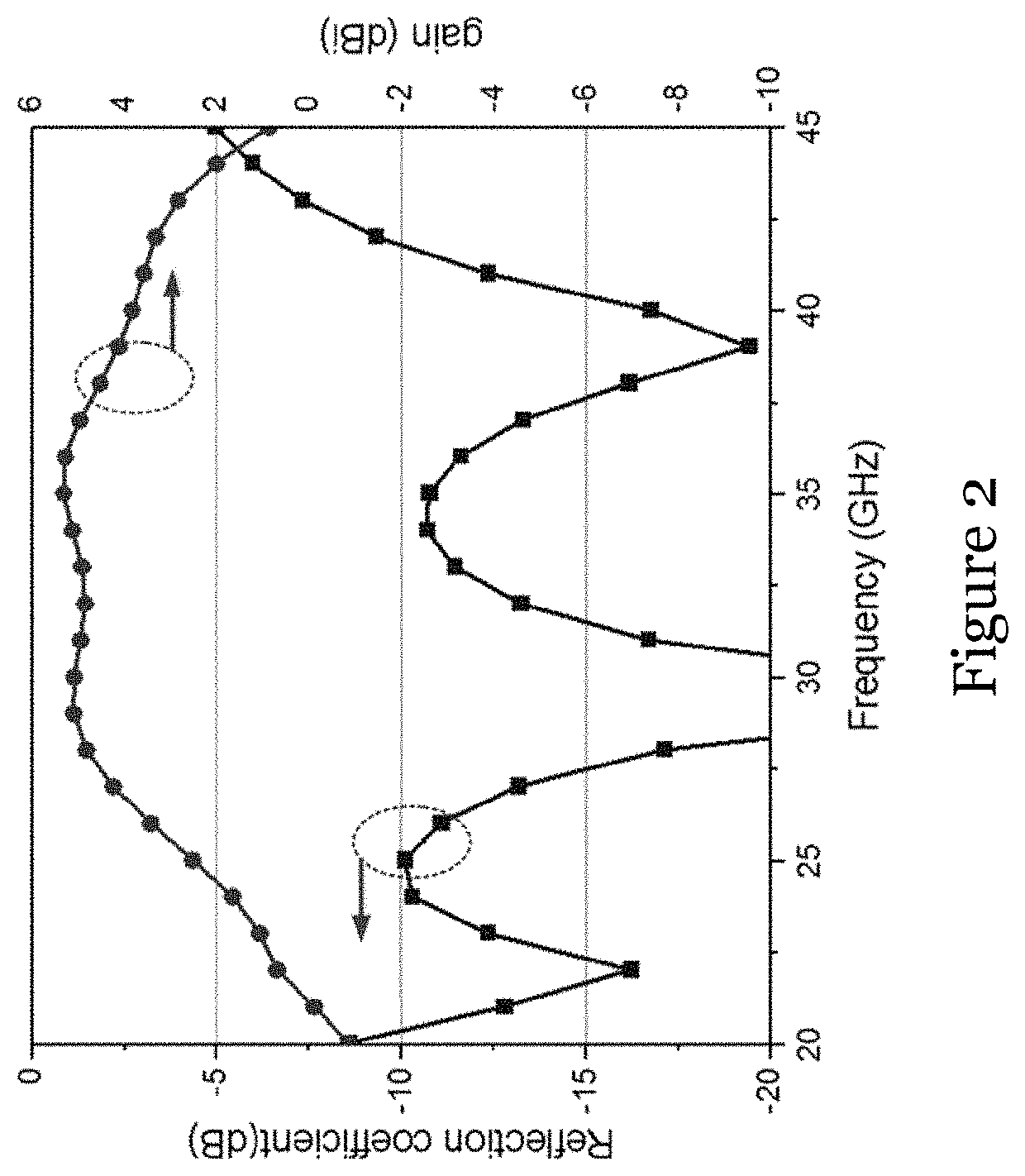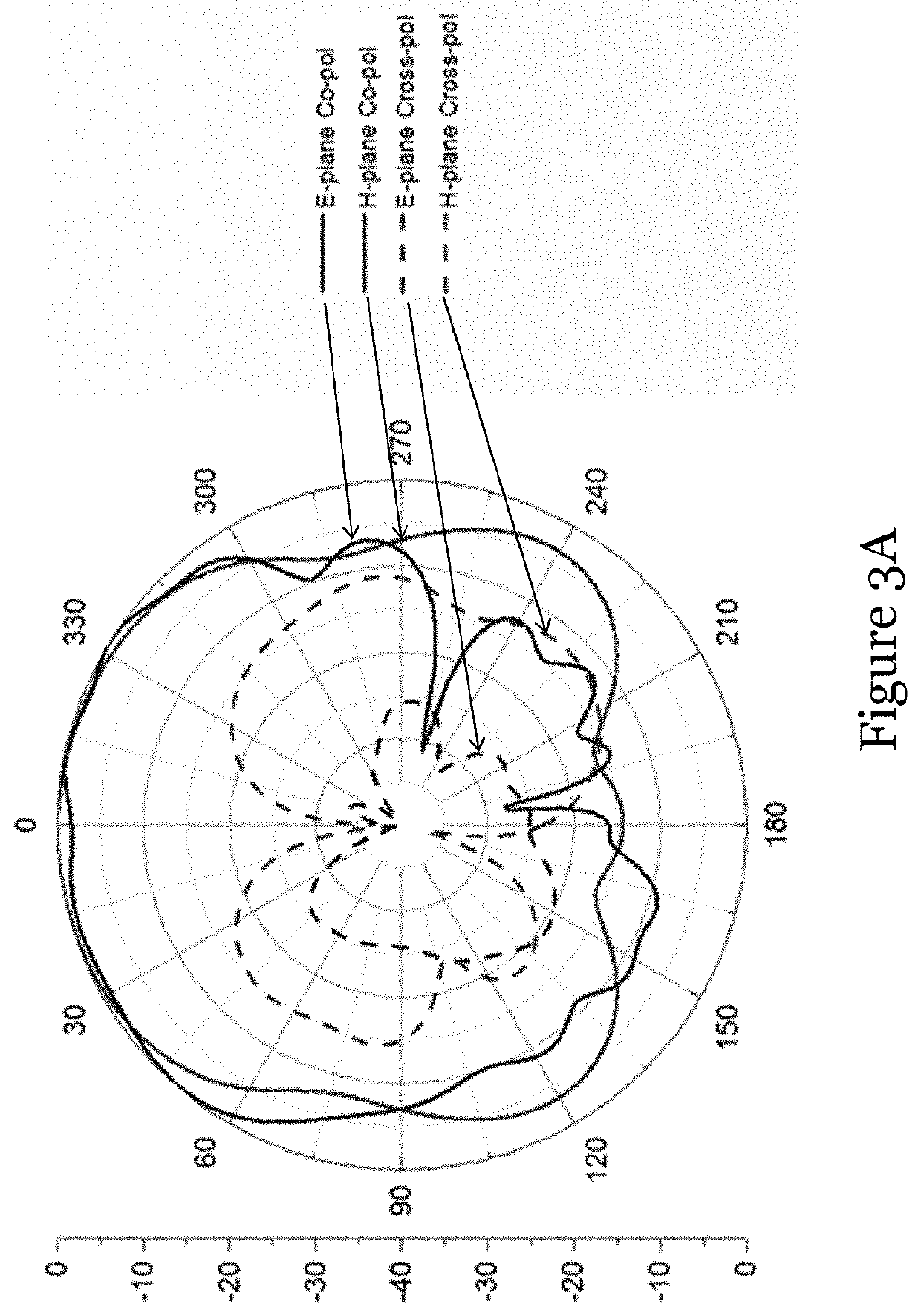Planar complementary antenna and related antenna array
- Summary
- Abstract
- Description
- Claims
- Application Information
AI Technical Summary
Benefits of technology
Problems solved by technology
Method used
Image
Examples
Embodiment Construction
[0055]FIGS. 1A to 1C illustrate a planar complementary wideband antenna 100 in one embodiment of the invention. As shown in FIG. 1A, the antenna 100 includes a substrate 104 and top and bottom layers 102, 103 (FIGS. 1B and 1C respectively) formed on opposite sides of the substrate 104. In this embodiment, the substrate 104 is made from Duroid® 5880 of Rogers Corporation, with a thickness of 0.254 mm.
[0056]The antenna 100 includes a planar dipole antenna 106 and a loop antenna 108 that are operably connected with each other, and a feed network 112 for connection with a feed source. The feed network 112 is operably connected with the planar dipole antenna 106 and the loop antenna 108 for feeding an electrical signal from the feed source to the planar dipole antenna 106 and the loop antenna 108 so as to form an electric dipole at the planar dipole antenna 106 and a magnetic dipole at the loop antenna 108.
[0057]As shown in FIG. 1C, the planar dipole antenna 106 and the loop antenna 108 ...
PUM
 Login to View More
Login to View More Abstract
Description
Claims
Application Information
 Login to View More
Login to View More - R&D
- Intellectual Property
- Life Sciences
- Materials
- Tech Scout
- Unparalleled Data Quality
- Higher Quality Content
- 60% Fewer Hallucinations
Browse by: Latest US Patents, China's latest patents, Technical Efficacy Thesaurus, Application Domain, Technology Topic, Popular Technical Reports.
© 2025 PatSnap. All rights reserved.Legal|Privacy policy|Modern Slavery Act Transparency Statement|Sitemap|About US| Contact US: help@patsnap.com



